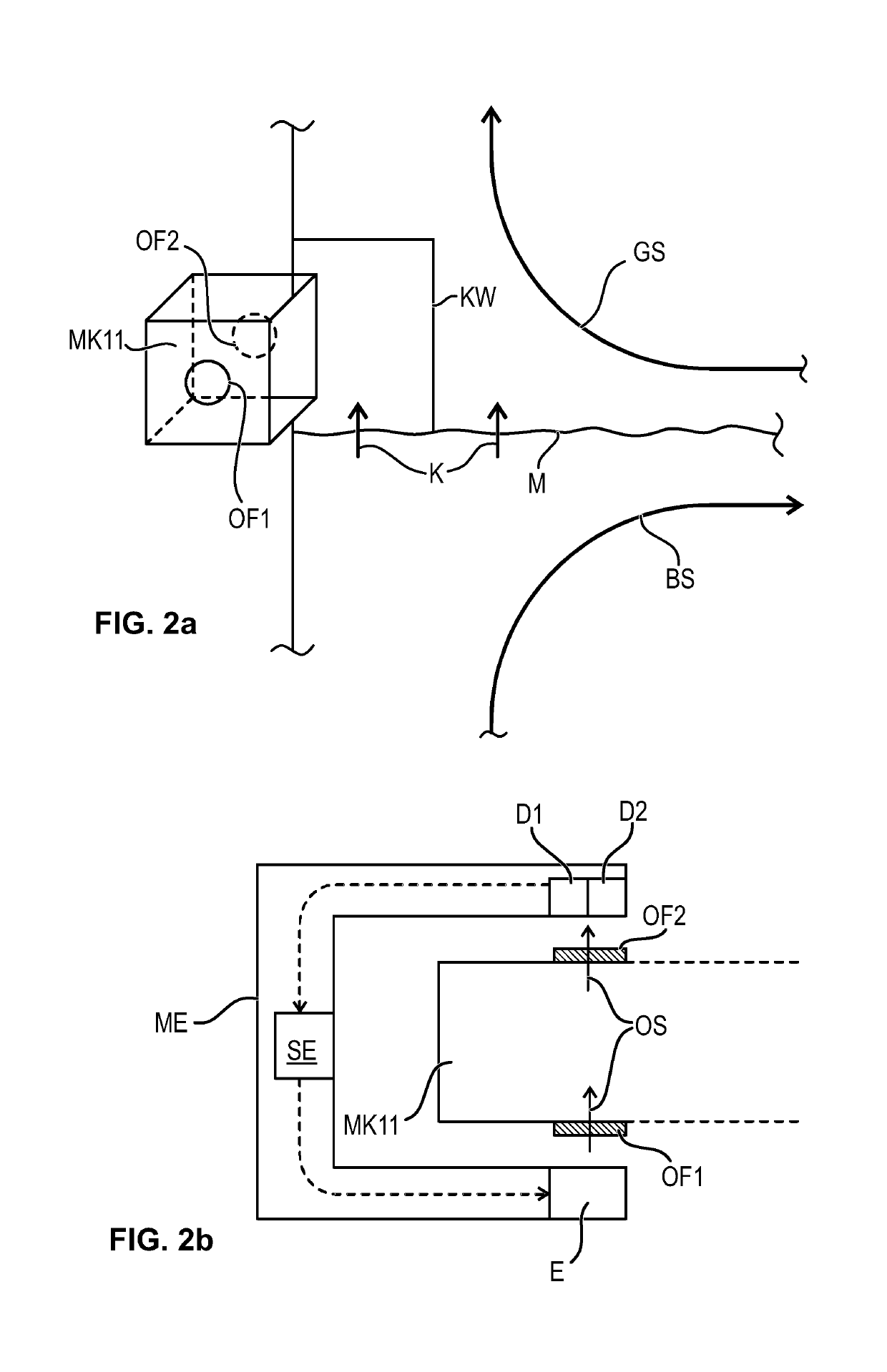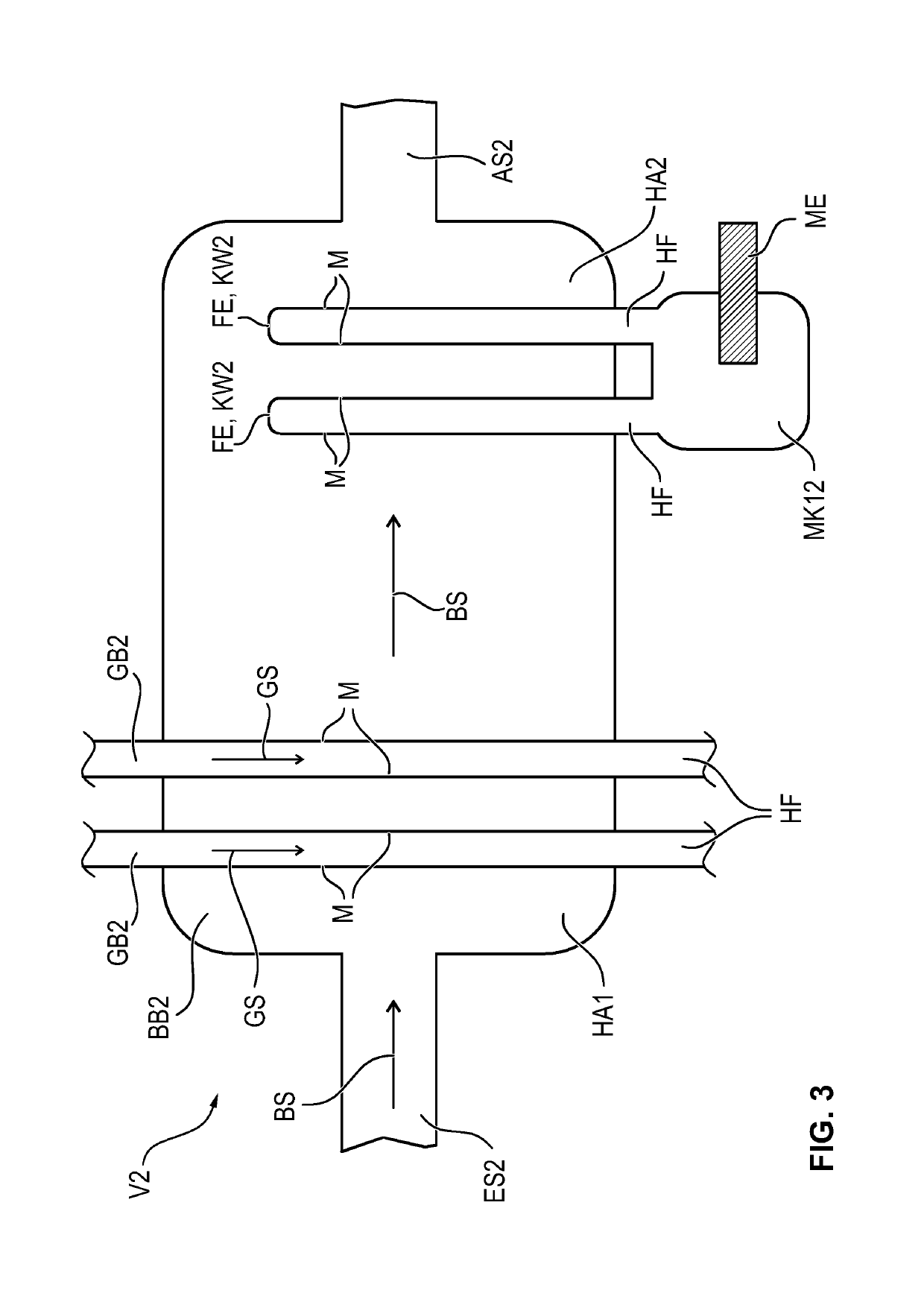Extracorporeal blood gas exchange device
a gas exchange device and extracorporeal technology, applied in the field of extracorporeal blood gas exchange devices, can solve the problems of stress and hyperacidification, high breathing effort, and risk of fatigue of respiratory muscles
- Summary
- Abstract
- Description
- Claims
- Application Information
AI Technical Summary
Benefits of technology
Problems solved by technology
Method used
Image
Examples
Embodiment Construction
[0037]Referring to the drawings, FIG. 1 shows the extracorporeal blood gas exchange device V.
[0038]A bloodstream BS flows through an inflow area ES in a bloodstream area BB along a membrane M and finally to the outflow area AS.
[0039]As a gas-liquid barrier, the membrane M separates the bloodstream area BB from a gas-carrying area GB, which carries a gas flow GS.
[0040]A portion of carbon dioxide K can pass over through the membrane from the bloodstream BS into the gas flow as well as a portion of oxygen S can pass over from the gas flow GS into the bloodstream BS.
[0041]A measuring cuvette MK2 is separated by the membrane M from the bloodstream area BB. Carbon dioxide K can also now pass over from the bloodstream BS into the cuvette MK2.
[0042]An optical measuring unit ME can now measure a carbon dioxide partial pressure present in the measuring cuvette MK2.
[0043]The measuring cuvette MK2 is closed by a cuvette wall KW providing a gas-tight closure against the gas-carrying area GB (clo...
PUM
 Login to view more
Login to view more Abstract
Description
Claims
Application Information
 Login to view more
Login to view more - R&D Engineer
- R&D Manager
- IP Professional
- Industry Leading Data Capabilities
- Powerful AI technology
- Patent DNA Extraction
Browse by: Latest US Patents, China's latest patents, Technical Efficacy Thesaurus, Application Domain, Technology Topic.
© 2024 PatSnap. All rights reserved.Legal|Privacy policy|Modern Slavery Act Transparency Statement|Sitemap



